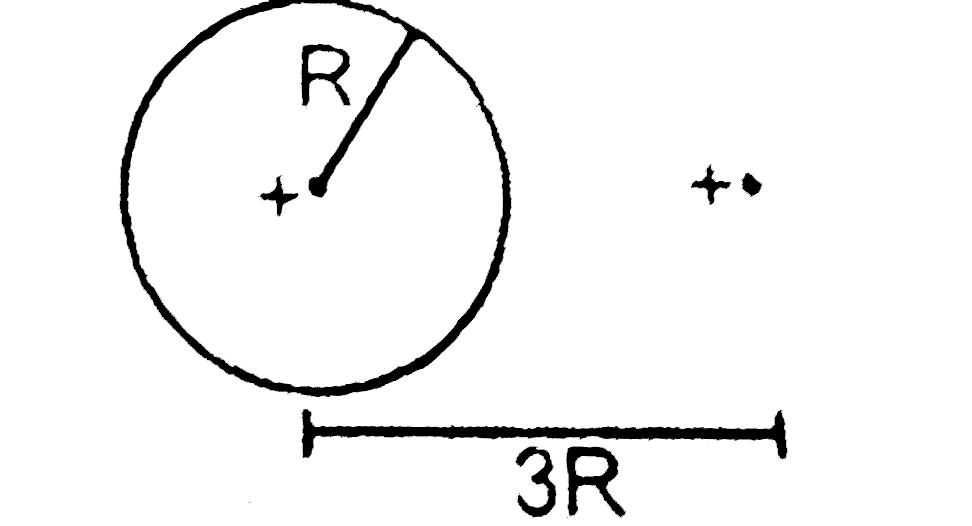The surface density of charge on the surface of a charged conductor in the air is 26.5μCm−2 . The the outward force per unit area of the charged conductor is (ε0=8.85×10−12C2N−1m−2)
(a)3.5Nm−2
(b)17.7Nm−2
(c)8.85Nm−2
(d)39.7Nm−2
The correct Answer is:D
To solve the problem, we need to find the outward force per unit area on a charged conductor given its surface charge density and the permittivity of free space.
1. Identify Given Values:
- Surface charge density, σ=26.5μC/m2=26.5×10−6C/m2
- Permittivity of free space, ϵ0=8.85×10−12C2/(N⋅m2)
2. Formula for Force per Unit Area:
The outward force per unit area F/A on a charged conductor can be calculated using the formula:
F/A=12σ2ϵ0
3. Substitute the Values:
Substitute the values of σ and ϵ0 into the formula:
F/A=12(26.5×10−6)28.85×10−12
4. Calculate σ2:
First, calculate (26.5×10−6)2:
(26.5×10−6)2=7.0225×10−10C2/m4
5. Calculate the Force per Unit Area:
Now, substitute this value back into the equation:
F/A=127.0225×10−108.85×10−12
Calculate the division:
7.0225×10−108.85×10−12≈79.4N/m2
Now, multiply by 12:
F/A≈79.42≈39.7N/m2
6. Final Answer:
The outward force per unit area on the charged conductor is approximately:
F/A≈39.7N/m2
Conclusion:
The correct answer is 39.7N/m2.
- Surface charge density, σ=26.5μC/m2=26.5×10−6C/m2
- Permittivity of free space, ϵ0=8.85×10−12C2/(N⋅m2)
The outward force per unit area F/A on a charged conductor can be calculated using the formula:
F/A=12σ2ϵ0
Substitute the values of σ and ϵ0 into the formula:
F/A=12(26.5×10−6)28.85×10−12
First, calculate (26.5×10−6)2:
(26.5×10−6)2=7.0225×10−10C2/m4
Now, substitute this value back into the equation:
F/A=127.0225×10−108.85×10−12
Calculate the division:
7.0225×10−108.85×10−12≈79.4N/m2
Now, multiply by 12:
F/A≈79.42≈39.7N/m2
The outward force per unit area on the charged conductor is approximately:
F/A≈39.7N/m2
The correct answer is 39.7N/m2.
Similar Questions
Surface charge density of a sphere of a radius 10 cm is 8.85×10−8c/m2. Potential at the centre of the sphere is
View SolutionA parallel plate capicitaor with plates of area 1m2 each, are at a separation of 0.1m. If the electric field between the plates is 100 N/C, the magnitude of charge on each plate is : (Take ε=8.85×10−12C2N−m2)
View Solution
Knowledge Check
A uniformly charged conducting sphere of 4.4 m diameter has a surface change density of 60μCm−2. The charge on the sphere is
A7.3×10−3CB3.7×10−6CC7.3×10−6CD3.7×10−3CA metallic sphere of radius 18 cm has been given a charge of 5×10−6C. The energy of the charged conductor is
A0.2JB0.6JC1.2JD2.4JAssertion : Surface charge density of an irregularly shaped conductor is non-uniform.
Reason : Surface density is defined as charge per unit area.AIf both assertion and reason are true and reason is the correct explanation of assertion.BIf both assertion and reason are true but reason is not the correct explanation of assertion.CIf assertion is true but reason is false.DIf both assertion and reason are false.
The charge flowing in a conductor varies with times as Q=at−bt2. Then, the current
View SolutionThe charge flowing in a conductor varies with times as Q=at−bt2. Then, the current
View SolutionFind the flux of the electric field through a spherical surface of radius R due to a charge of 8.85×10−8C at the centre and another equal charge at a point 3R away from the centre (Given : ε0=8.85×10−12 units )

View SolutionThe force between two charges separated by a distance 1m is 1.8N. The charges are in the ratio 1:2 then the charges are
View SolutionAt which of the two points, 1 or 2, of a charged capacitor with nonparallel plates is the surface charge density greater?
View Solution
